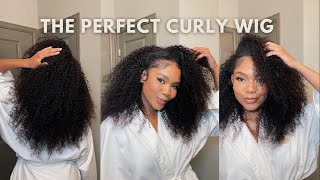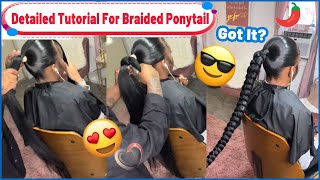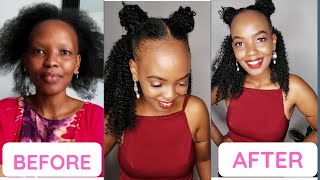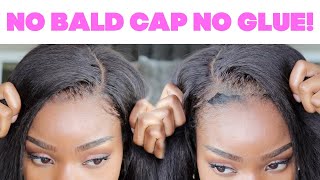Transitioning 101 - A Complete Guide To Switching From Relaxer To Natural Hair Part 1

Transitioning from relaxed to natural is not as hard as some would assume. Most claiming how hard it is are individuals who haven’t tried it or did not have the right resources to make it a successful transition.
Either way, if this is a path you choose to take then have no fear. Aunty BHI is here to shed some light on the process, the terms, and the highs and lows.
Now that we have that out of the way…congratulations on deciding to go natural! It is a big step but a positive one and as I have shared in previous posts like 6 Tips For Older Women Considering Going Natural. The key is knowing this is what you really want to do and seeing it as a positive step in your life.
Chances are if you are not sure and you approach it with a pessimistic attitude, all you will be able to see is negatives which will most likely cause you to backpedal and totally fall off the wagon.
Going natural is much more than just growing your relaxed hair out. This is changing a major part of your life. No, I am not trying to scare you, I am just getting you prepared for a journey that is so worth the effort and time you will need to put into it.
Step one – Choosing which path to take for your transition from relaxed to natural.
Going natural is a personal choice especially since you will be the one working with your hair. The first step is deciding which route you will take in this journey. There are two ways to go about going natural and they are very different.
Big Chop (BC) – Cutting off all relaxed hair immediately and starting fresh with only natural hair. This method allows you to use products for one type of hair (natural) and most women start with the TWA or Teeny Weeny Afro.
Understandably, this may be a daunting prospect if you have never worn your hair cropped before but many ladies have described the experience as freeing so if you are brave and impulsive, this is the path for you.
Long Term Transitioning – Allowing the relaxed hair to grow out for a while before cutting the relaxed ends off. Here, you will be left with two textures to work with (relaxed and natural) for the duration of the transition.
You have the option of putting your hair away while you allow it to grow with wigs*, weaves and braids. These are viable options but remember that going natural means learning your natural texture so it actually helps to eliminate the wigs, weaves and braids to learn more about your hair texture and what it responds to.
You will find that the best styles to use for this transition will be curly styles that blend both your natural and your relaxed texture. Go with styles like using flexi rod* sets, rollers sets, braid outs or twist outs.
Side note: I am not trying to discourage anyone from wearing wigs, weaves* or braids but many women who do wear them when they first go natural find themselves stuck and dependent on them as they have not familiarized themselves with their own hair. I would suggest learning your hair by working with it on a day-to-day basis whether you BC or transition. Once you know what your hair’s needs and how to work with it then go ahead and wear wigs*, weaves* and braids as a style option.
 Deciding which way to go is entirely up to you; the woman going natural. If you have decided to transition then you most likely do not want to cut all of your hair off to start.
Deciding which way to go is entirely up to you; the woman going natural. If you have decided to transition then you most likely do not want to cut all of your hair off to start.
Both routes have their pros and cons and neither is easier than the other except in the individuals mind.
As I said before, they are two very different paths to becoming natural with their own set of obstacles and successes and only you can decide which path is best for you.
Step Two – Finding resources to assist in your natural hair journey
These resources can range from people to books and DVDs or online websites. How and who you choose to use as a resource is up to you but understand they will be needed.
Others have gone down that path prior to you so utilize their knowledge and learn from their mistakes. We are all different and so is our hair. Finding the tools that will make this journey easier can be a challenge but that does not mean you will fail.
Do you like going to salons? Find a natural hair salon that caters to newly naturals. Do you like videos? Find YouTubers who have videos on going natural. Do you like websites and blogs? Our site is full of information on how to transition successfully! Do you like books? Find some natural hair books that cater to newly naturals.
Gaining as much insight into this change is vital to ensuring your success. Finding a resource avenue that you feel comfortable using doesn’t mean you cannot use all that is available to you. Step out of your comfort zone and utilize everything mentioned above.
Do not forget to pick the brains of friends and family members who have already returned to natural! This includes meet up groups that many have started around the country or you can even communicate with naturals around the world online via forums. Interacting with naturals who can give you pointers on how and what to do is a huge asset especially if they are local.
We are all in different climates and our geographical location does affect your hair. I’m in Denver, Colorado. Will my hair trials and tribulations differ from someone with a much more humid climate? Of course! Denver is extremely dry so I will have very different moisturizing dilemmas than someone from a coastal region.
The bottom line is to remember there are so many ways to gain or access resources. Part 2 will discuss steps three, four and five so stay tuned and remember these first steps are taking you down the right path to being successful at returning to natural hair.




